Teeltadvies Categories: Crop protection

Developments in potworm control
Found in:19 December 2023
Since insecticides that are effective against potworm are no longer available in phalaenopsis cultivation in Holland, controlling the problem of the damage of the larvae of Lyprauta has been challenging, to say the least.

Entomopathogenic fungi prove useful in controlling Parvispinus thrips
Found in:19 September 2023
Parvispinus trips (pepertrips) vormt sinds ruim twee jaar wereldwijd regelmatig problemen in de teelt van Anthurium. De trips is aanmerkelijk lastiger te beheersen dan de andere bekende tripsen voor Anthurium zoals Californische trips of Echinotrips. Dit jaar hebben we in de praktijk goede resultaten gezien van de inzet van entomopathogene (insectenparasitaire) schimmels tegen de pepertrips.

Future of crop protection Orchids
Found in:19 September 2023
The use of chemical pesticides in greenhouse farming has been closely scrutinized for some time. The number of available crop protection products has been declining for years and will decrease by another 40% between 2023-2027.
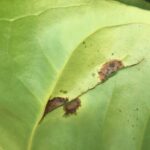
Anthurium and Xanthomonas
Found in:29 November 2022
A very dangerous disease caused by the bacterium Xanthomonas (X) can occur in Anthurium. It usually involves the bacterium Xanthomonas phaseoli pv. Dieffenbachiae (Xpd). The Xanthomonas, which is harmful to Anthurium, can occur in many different strains (types). There are mild variants where only a limited part of the range gets affected, but there are also aggressive types that spread widely and quickly.
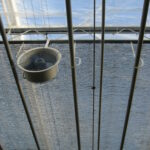
Energy savings in Phalaenopsis
Found in:30 October 2022
Currently, energy prices are extremely high and we do not know what lies ahead for the coming winter. It is absolutely essential that major energy savings are made to keep plant costs under control.
Since greenhouse climate control is an interaction between parameters such as temperature, humidity, light and irrigation, it is important to determine a strategy whereby these aspects are still balanced if energy savings are to be made in many areas.
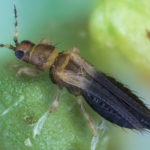
Silver lining in the approach to Tobacco Thrips
Found in:23 June 2022
Thrips causes considerable damage to plants and are difficult to control. Therefore, it is important to be alert for signs of Tobacco thrips so that prompt action can be taken. This edition focuses on the approach to Tobacco thrips (Thrips parvispinus).

Scouting a difficult newcomer: tobacco thrips
Found in:25 March 2022
It is important to be alert to signals of tobacco thrips, so that early intervention can be taken. In this article we pay attention to identifying and scouting tobacco thrips.
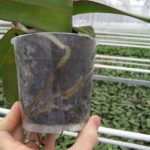
Pythium
Found in:23 March 2018
In the cultivation of Anthurium and Phalaenopsis, several fungi and bacteria can cause damage to the crop and subsequent plant failure. In this article, we are focusing on the fungus Pythium (root rot).
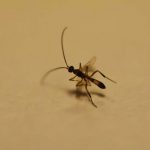
Developments in pot worm control
Found in:22 November 2016
The pot worm has been present for many years in the Phalaenopsis cultivation. With many Phalaenopsis and other orchid growers, the population of mosquitoes and larvae in the crop (greenhouse and substrate) has become quite substantial in some cases.

Root problems
Found in:2 August 2016
Healthy roots are the basis of a healthy plant. It is of the utmost importance to ensure that the root system stays healthy.

Hygiene in Anthurium and Phalaenopsis cultivation
Found in:29 February 2016
In the cultivation of Phalaenopsis and Anthurium there are several diseases for which a high hygiëne level is of great importance for prevention. There are several sources of infection and hygiëne measures which are explained in this article.

The purpose of chalking
Found in:7 December 2015
When you consider chalking, it is important to determine which goals you want to achieve, such as: – avoiding an excessive greenhouse temperature; – avoiding the entrance of too much light (caused by insufficient sun shading); – preventing uneven light distribution, the so-called ‘light strips’. Greenhouse temperature Temperature peaks occur due to a lack of […]

Screen selection and chalking
Found in:7 December 2015
During Anthurium and Phalaenopsis cultivation, one to three screens are mainly used. The number of screens depends on the location of the nursery and the type of greenhouse.
